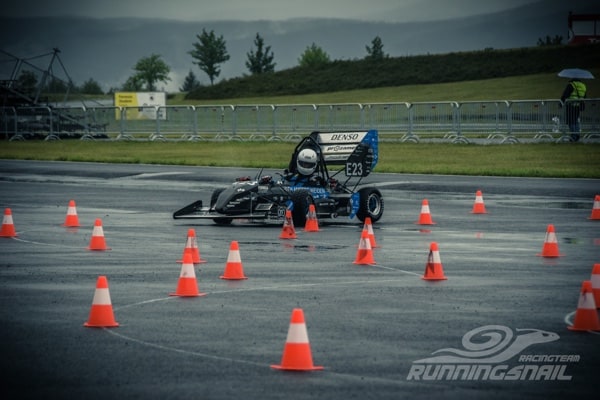You may have heard about “Running Snail”, a team of German university students building an electric race car as a school project – we blogged about them last year. Now they’re at it again, they will build a new car for the 2017/18 competitive season, and of course Percepio will continue to sponsor the team with licenses for Tracealyzer, our tool for runtime visualization of RTOS-based systems. After all, we love cool technical projects just as much as you do.
The Running Snail car of 2017 is packed with four engines and a large Lithium-Polymer cell battery. It also has, and this is where things get really interesting from a Percepio perspective, nine STM32 microcontrollers from ST Microelectronics (both STM32F4 and STM32F302) running FreeRTOS and handling everything from motor control and sensor reading to radio communication and the dashboard. The team is using Tracealyzer in innovative ways to find out what’s happening inside those microcontrollers.
Measure execution times
– The first thing we always use Tracealyzer for is to measure the execution times of all tasks. That could be done with hardware timers, but would take much more time, and we would not have the advanced possibilities like the CPU load view. We then optimize the frequencies of the cyclic tasks. This is important e.g. for our traction control, where a high execution frequency is a big advantage. With Tracealyzer, we can find the best period to have not too much CPU load but still react as fast as possible, says Simon Ott, software developer with the team.
Another hard-to-find issue, a controller that seemingly forgot about one of its tasks but not until the system had been turned on for a few hours, was resolved with the help of Tracealyzer’s streaming trace mode which permits recording very long traces.
Compete in August
The Formula Student competition was founded in 1981 by the US Society of Automotive Engineers. In 1999, Europe caught up, pioneered by Formula Student UK in Silverstone and followed by events all over Europe and the whole world. The goal of this yearly event is to let students work in teams on a relatively large project, in order to prepare them for future challenges working at a company. The first competitive event of the 2017 season will be in August.
The team scored some impressive results during the last season and we wish them good luck with the coming season!

